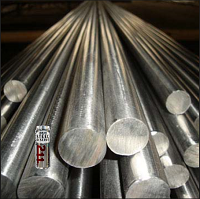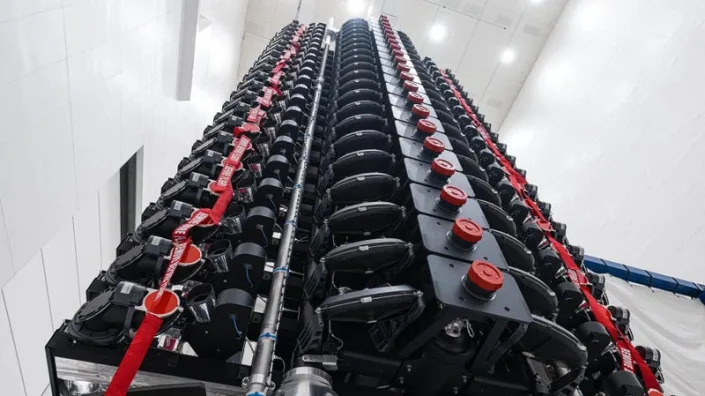SpaceX Shows Off New Starlink V2 'Mini' Satellites
Post# of 127977

February 27, 2023

SpaceX is set to launch 21 miniaturized versions of its next generation Starlink satellites to low Earth orbit later today. The V2 Mini, as SpaceX calls it, is a compact version of the one the company is hoping to launch with its upcoming Starship rocket.
The company’s Starlink V2 Mini satellites will launch aboard a Falcon 9 rocket on Monday at 6:13 p.m. ET from Space Launch Complex 40 at Cape Canaveral in Florida. Ahead of the launch, SpaceX revealed new details about the satellites through a series of tweets on Sunday.
The second generation Starlink satellites will be equipped with more powerful antennas and high-speed frequencies, “which will allow Starlink to provide ~4x more capacity per satellite than earlier iterations,” SpaceX wrote on Twitter. V2 Minis also come with argon-fueled Hall thrusters, a cheaper alternative to xenon propellant that’s commonly used for satellite propulsion systems, according to SpaceX. This will mark the “first time ever that argon Hall thrusters are operated in space,” the company claims.
SpaceX had kept the specifications of its V2 Mini satellites under wraps. However, speculations around the smaller next generation satellites began to emerge when the company filed a request with the Federal Communications Commission (FCC) to grant it temporary authority to launch heftier broadband satellites. In its letter, SpaceX announced its intention to downsize the Gen2 satellites such that Falcon 9s can carry them to space.
The V2 Mini will operate under a recently granted license by the FCC. In December 2022, the commission approved SpaceX’s request to launch 7,500 Gen2s to low Earth orbit. The company had requested the launch of 29,988 Starlink satellites, but the FCC only granted approval to a quarter of the total to “protect other satellite and terrestrial operators from harmful interference,” the FCC said in its order.
The full-sized V2s are designed to be more effective, but they are much heavier than their predecessors. V2s will measure 22 feet long (7 meters) and weigh roughly 2,755 pounds (1,250 kg), while the earlier versions weigh about 573 pounds (260 kilograms).
In order to launch this heavier payload, SpaceX needs to see its highly-anticipated Starship rocket take flight. The company has been trying to get its megarocket off the ground since summer 2021, and Starship may finally be ready for its first orbital test flight in March, pending a launch license from the Federal Aviation Administration.
Until Starship is ready for operational flights to low Earth orbit, SpaceX has opted to create a smaller version of its V2 satellites that could fit into its operational Falcon 9 rocket. But the company is still looking forward to seeing its megarocket take off so that it can carry the full-sized V2s to low Earth orbit. At that point, SpaceX will likely replace the V2 Minis with their larger, more capable counterparts.
Speaking at the Space Mobility Conference in Orlando, Florida, SpaceX senior director of national security space solutions Gary Henry was quoted as saying that the next generation Starlink satellites are “waiting very patiently to be launched on Starship.”
https://www.yahoo.com/news/spacex-shows-off-s...00839.html
 (0)
(0) (0)
(0)